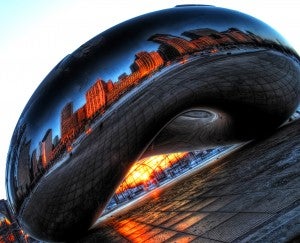Energy efficiency may be the Rodney Dangerfield of electricity policy. Compared to bulky power plants, it gets little respect.
Part of the problem is efficiency is hard to visualize. A new refrigerator, even if it uses 50 percent less power, still looks like a refrigerator. And, insulation is buried within walls, whereas it’s hard to miss a nuclear reactor or even a wind turbine.
Another issue is power companies see efficiency as competition and want to limit its development. FirstEnergy, for instance, lobbied to freeze Ohio’s energy efficiency standards, abandoned its own conservation programs, and led efforts to do away with demand response, an innovative energy management program that rewards people and businesses for conservation.
So, the Illinois Power Agency’s (IPA’s) recent decision to put efficiency and generation on the same level provides some much needed respect.
[Tweet “Illinois Steps Up and Gives #EnergyEfficiency the Respect It Deserves from @DickMunson”]
The IPA is a rather unique government agency, tasked with procuring electricity on behalf of customers for Illinois’ two main utilities, ComEd and Ameren Illinois. Beginning in 2014, EDF and the Citizens Utility Board (CUB) began advocating for IPA to include energy efficiency in its proposed procurement plan. If such negawatts (a wonky term for the avoided electricity achieved through efficiency) were treated on par with generation resources, i.e. power plants, we argued that the costs of supplying electricity would fall, as would greenhouse-gas emissions.
The IPA recently adopted our plan, calling it “Energy Efficiency as a Supply Resource,” and proposed conducting a separate auction to capture peak energy efficiency. Specifically, these are the negawatts that reduce the need for “peaker” generation plants, which only run during the most high-demand (and expensive) times of the day and are typically the dirtiest to operate. Not surprisingly, the utilities and power companies objected. Thankfully, the Illinois Commerce Commission, the agency charged with regulating electricity in the state, upheld the IPA’s approach. The agency is requiring the state’s major utilities to include the specific price of electricity at all hours of the day, in order to calculate the true value of energy efficiency programs.
Third-party energy efficiency programs, as part of their cost-benefit tests, will now be able to calculate how much efficiency trims energy use, when that shedding occurs, and the value of that avoided electricity. This change will be particularly beneficial to homes with smart thermostats, which can be programmed to temporarily reduce air conditioning during the hottest part of the day, and small businesses with energy-efficiency equipment that runs during high-cost, ‘peak’ hours.
By giving energy efficiency the respect it deserves, Illinois will be able to take advantage of its ongoing deployment of smart meters in order to advance more energy-saving innovations. Such procurement will help alleviate stress on the power grid, especially during ‘peak’ times, in order to reduce overall energy demand, cut pollution, and trim the price of electricity for Illinoisans.










